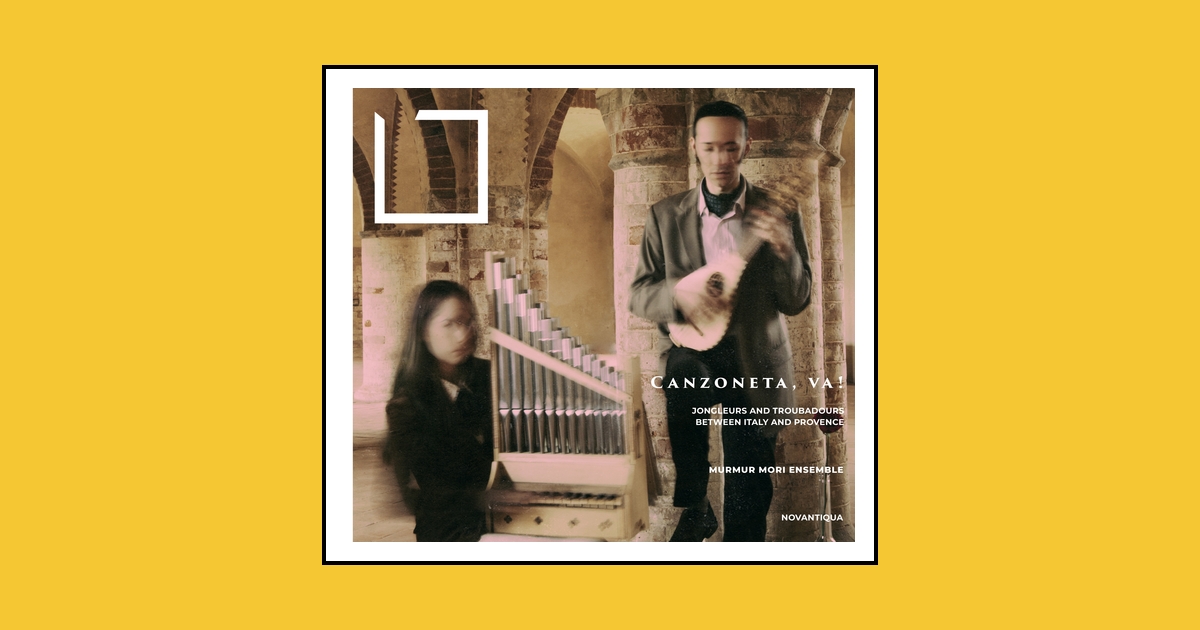
Jongleurs and troubadours between Italy and Provence in the XII and XIII centuries
A new album concerning the connection between Provençal and Italian troubadours of the 12th and 13th centuries, recorded in Morimondo Abbey on May 2023, by the Italian ensemble Murmur Mori:
Mirko Virginio Volpe: chant, gittern, hurdy-gurdy, frame drum
Silvia Kuro: chant, portative organ, naqqāra, spoons, bells
Alessandra Lazzarini: flutes
Matteo Brusa: citole, riqq, darbouka
The Provençal was, in the 12th and 13th centuries, the language of the courtly poetry. Its cradle was
Provence, so intimate with relationships, with memories, blood ties and language with the Italian territory, which was immediately and completely overwhelmed by this art movement. Provençal lyric flourished and its poetic forms sprouted into songs whose echoes could be heard from Alps of
Piedmont to Palermo, in the empire of the Hohenstaufen. Among the greatest Provençal troubadours were those who lived the Italian life, fighting with verses and sword for Italian lords, singing Italian women. There was Raimbaut de Vaqueiras who, around 1180, arrived on foot from Provence, perhaps attracted by the magnificence of the courts of Northern Italy, and around 1185 already was composing a bilingual tenso where a woman refused, in a colorful Genoese dialect, his verses of love in Provençal. Others, like Aimeric de Pegulhan, withdrew to Italian territory to escape the persecutions of the church against the many schismatic movements of the 13th century, such as the Cathars; then there were also Italian troubadours who left their homeland following the romantic dream of the many knights-jongleurs-poets of southern France, the most famous of which was Sordel. In Genoa Lanfranc Cigala, notary and troubadour, composed a beautiful tenso with the Provençal trobairitz Guillelma de Rosers. Lanfranc Cigala, just like Sordel, wrote only and exclusively in Provençal. “Aiuta Dé, vera lus et garçat” is a translation into a Piedmontese vernacular of the famous Alba "Reis Glorios" by Giraut de Borneill, who lived in Provence in the 12th century and was called the “master of troubadours”. In the 12th and 13th centuries, people and art traveled continuously and often in the last verses of compositions, by both male and female, there was an envoi or tornada, a farewell with which the song was sent to the desired person, often through a messenger. “Canzoneta, va!”, was a formula often used as an envoi, perfect to express the long wandering of poetry and music coming from Provence to Italy, influencing Italian vernacular poetry, traveling from the courts of Northern Italy to the squares of Bologna, when also the poetry from Northern France, that of the trouverès, was leaving traces of Matter of France also in the famous rhymes of the Memoriali Bolognesi, provençal was to finally reach the court of the great Frederick II, the cradle of the Sicilian School. Italy in the 12th and 13th centuries was a country that welcomed into its courts and communes the Provençal and French muses who often fled to Italian territory to seek their fortune in prestigious courts or to escape religious persecution, nurturing a school of poetry and local music that was already forming and that only faded away with the birth of the stilnovisti's style of poetry, among whom, mainly by Dante and Petrarch, the troubadours who preceded them were praised, admired and celebrated.
https://murmurmori.com
News,Latest news


